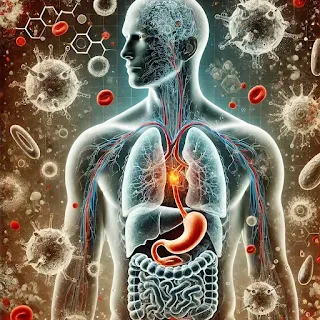Navigating India's Dual Nutrition Challenge: Malnutrition and Lifestyle Disorders in a Growing Economy
General Description of the Current Diet and Nutrition Scenario
Health
and nutrition play a crucial role in driving human resource development in
India. As a lower-middle-income country, with a per capita GNP ranging from
$996 to $3,945 (World Bank classification), India faces significant nutritional
challenges. Ranking 160 out of 209 countries in human development, the nation
grapples with persistent poverty and malnutrition.
Approximately 28% of the rural population and 26% of the urban population live below the poverty line, defined by caloric requirements of 2,400 Kcal per capita daily in rural areas and 2,100 Kcal in urban areas. Inadequate nutrition has led to widespread issues like stunting, wasting, and chronic diet-related disorders, which contribute to higher morbidity and mortality rates. These problems not only diminish individual productivity but also impose substantial economic losses, hampering overall development. Addressing these challenges is essential for ensuring sustainable growth and a healthier future for the population.
Common Nutrition Problems
India faces several significant nutrition challenges, particularly
among the rural poor and urban slum populations. Protein Energy Malnutrition
(PEM) and deficiencies in essential micronutrients like vitamin A, iron,
iodine, and vitamin B-complex are prevalent. These issues often begin as early
as conception due to widespread maternal undernutrition, including low maternal
weight, poor pregnancy weight gain, anemia, and vitamin deficiencies.
Consequently, about 22% of infants are born with low birth weight (<2.5 kg),
far higher than the <10% seen in developed countries.
Undernutrition is common during childhood, with about 43% of
children under five being underweight and 20% experiencing stunting or wasting,
indicating long-term nutritional deficits. Severe forms of PEM like kwashiorkor
and marasmus are rare (<1%), but subclinical undernutrition persists widely.
Poor feeding practices contribute to the steep rise in underweight prevalence
from 27% at six months to 45% at two years of age. Persistent undernutrition
during childhood leads to short stature in adulthood, with 33% of men and 36%
of women having a BMI below 18.5, reflecting chronic energy deficiency.
Vitamin A deficiency affects 0.8–1% of preschool children, causing
issues like night blindness and increasing the risk of disease and mortality.
Anemia is a critical problem, affecting 70% of children aged 6–59 months and
75% of women, with the highest prevalence (50%) among pregnant women.
Nutritional anemia contributes to 24% of maternal deaths annually, reduces
birth weights, and impairs work capacity and learning ability. Addressing these
nutrition challenges is vital for improving health and productivity across the
population.
Food Availability and
Consumption
Over the years, food production in India has grown significantly. From 108 million tonnes in 1970-71, the production of food grains, including cereals, millets, and pulses, increased to over 230 million tonnes by 2007-2008. While cereals and millets are produced in adequate quantities, the production of pulses, a key protein source for the rural poor, has declined. Additionally, vegetable production falls about 30% short of the demand, which is approximately 100 million tonnes.
 |
| Food availability (per caput/g/day) |
In terms of milk, India produced about 100.9 million tonnes in
2006-2007, translating to an average daily availability of 245 grams per
person, lower than the global average of 285 grams. Despite comparable per
capita food availability to Recommended Dietary Allowances (RDA), unequal
distribution within families and communities, particularly among vulnerable
groups with low incomes, creates nutritional disparities.
Studies from the National Nutrition Monitoring Bureau (NNMB)
reveal that, apart from cereals and millets (396g), the daily intake of most
food groups falls short of RDA standards, with protein-rich pulses and legumes
consumed at less than half the recommended quantity. Similarly, green leafy
vegetables and other vegetables, vital sources of micronutrients, are consumed
in inadequate quantities, with averages of 14g and 43g respectively. Visible
fat intake is also below 50% of the RDA.
 |
| Food Consumption (g/day) |
Around 70% of households face energy inadequacy, while 27%
experience protein insufficiency. Energy inadequacy, rather than protein
deficiency, remains the primary issue. This gap can be addressed by increasing
the intake of staple foods already consumed.
At the same time, urbanization has led to a rise in diet-related
non-communicable diseases. High-income groups often consume energy-dense diets
rich in fat, sugar, and low in fiber. Combined with sedentary lifestyles,
alcohol consumption, and tobacco use, these factors contribute to obesity,
diabetes, hypertension, heart disease, and certain cancers. Addressing these
dual challenges—malnutrition and lifestyle diseases—requires a balanced
approach focusing on equitable food distribution, affordability, and public health
education.
Related Posts















%20is%20made%20by%20the%20liver%20and%20travels%20through%20the%20blood%20to%20areas%20of%20inflammati.webp)
.%20The%20image%20includes%20a%20basic%20human%20body%20outline%20with%20highlighte.webp)





